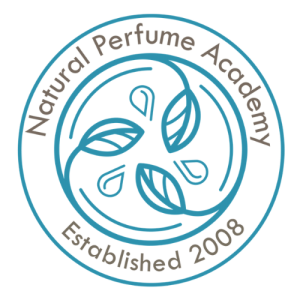Natural Perfume Academy Main Glossary

Welcome to the Natural Perfumery Glossary
The Natural Perfumery Glossary is a comprehensive public resource designed for all natural perfumers, whether you're a seasoned professional or just beginning your journey. This glossary serves as an educational tool, offering detailed definitions and insights into a wide range of natural perfume materials and terms.
Our entries cover various aspects crucial to the art and science of natural perfumery, including:
- Description and Characteristics: Detailed profiles of natural ingredients, including their origins, extraction methods, and unique olfactory qualities.
- Blending Suggestions: Insights into what other materials a particular ingredient pairs well with, helping you create harmonious and well-rounded compositions.
- Usage and Applications: Practical advice on how to incorporate each ingredient into your perfume creations.
- Safety and Regulatory Issues: Important information on the safe use of materials, including any relevant regulatory considerations.
At the Natural Perfume Academy, we are committed to fostering a deep understanding of natural perfumery through education and certification. Our glossary is a testament to this commitment, providing a valuable reference to support your ongoing learning and mastery of natural perfume making. Explore the glossary to enhance your knowledge and craft exquisite, all-natural fragrances with confidence.
Special | A | B | C | D | E | F | G | H | I | J | K | L | M | N | O | P | Q | R | S | T | U | V | W | X | Y | Z | ALL
P |
|---|
Palettecollection of raw materials used by the perfumer to create perfume | ||
Parfum/Perfume(see Extrait) highest concentration of scent to diluent in perfume making; 15 to 30% composition blend to alcohol or diluent | ||
Perfumeran artist who creates perfume | ||
Persistence This term is used to describe the longevity or staying-power of a particular perfume on the skin. For example: "this scent has remarkable persistence". | ||
Phytotherapy"This term is a compound of two Greek words meaning "plant" and "healing" and is used to describe all forms of treatments using plants. In France this term is used to describe what we would call Medical Herbalism but aromatherapy is often included under the same heading"...Patricia Davis in "Aromatherapy, an A to Z". It can be argued that perfumes created using vibrant, natural plant materials and extracts with no synthetic or chemical additives could also be regarded as a branch of Phytotherapy. | ||
PommadeFatty substance obtained through enfleurage; the pomade is then used for solid perfume making, or it is further processed by soaking the pomade in high proof alcohol for several weeks to obtain a fragrant tincture which is filtered and used to make alcohol based perfume. | ||
Powderya note obtained through the blending of sweet, woody notes with fruity, green or citrus notes; typified by the use of vanilla, patchouli, benzoin, labdanum, cananga/ylang-ylang, rose, sandalwood and/or bergamot | ||


 Phototoxicity results from an overheating reaction between a chemical (either ingested or topically applied) and ultraviolet light. The reaction can cause severe burns and in some cases may cause permanent scaring.
Phototoxicity results from an overheating reaction between a chemical (either ingested or topically applied) and ultraviolet light. The reaction can cause severe burns and in some cases may cause permanent scaring.